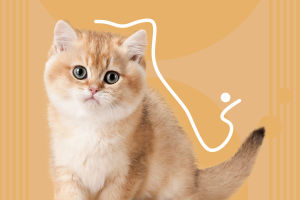Langurs belong to a species of Old World monkey of the subfamily colobinae found throughout Southeast Asia and Southern China, as well as parts of India. These monkeys are distinguished by their leaf-rich diet.Here are seven fun facts about this unique monkey.
1. They Have a Complicated Digestive System
Unlike New World monkeys, which feed mostly on fruit, the langur feeds largely on leaves and other parts of plants, including bark, buds and seeds, and, yes, some fruit.
Many even have special stomachs that enable them to better break down the cellulose found in plants. Unusual for a primate, langur digestion is similar to a ruminant's.
They have multi-chambered stomachs that host bacteria that help digest the plant cellulose in their leafy diet. Bacteria in their foregut prime tough plant matter, so that more nutrients can be absorbed by the gut later in the digestive process.
2.Langurs Vary in Color from Species to Species
Gray and black are more common, as are shades of orange and gold.Youngsters can be a very different hue from adults.
Known as neonatal coat coloration, the color is thought to help the young be identified for protection by their troop.Many langurs also are characterized by pointed hair around their face and head.
3.Langur monkey live in many places.
They can be found in many primary and secondary tropical rainforests, where they will be most commonly found jumping from one tree to another. Langurs reside in forests, mountains, grasslands, and areas that are densely forested. They are one of the few primates whose habitat varies so much as they can also be found in deserts, swamps, and lowlands.
The subfamily that langurs belong to is called Colobinae. There are many langurs present in the Indian subcontinent. Many Indian primates are well known around the world.
4.Langur monkeys live with group.
Langur monkeys stay together in packs called troops. Most troops include a dominant male and a mix of males, females, and offspring. Others might only include male members.
They become very territorial over their groups and resources and often show aggression or end up in fights in order to retain their precious commodities. When the dominant male changes in any group, there are many cases of fighting in order to showcase authority and dominance.
5.Langurs communicate with voice.
Langurs are very vocal creatures that have a variety of calls for different purposes. They have different calls for pointing out danger, attracting a mate, directing anger, and voicing sadness.
The noises that they make are generally very loud and can be heard from very far distances. Some of these include grunts, rumbles, screams, hiccups, honks, coughs, harsh barks, and screeches.
6. Some Species Are Endangered
Some face a very real threat of extinction.On the whole, langurs face a variety of threats from human encroachment across their various ranges. Hunting, habitat destruction and illegal wildlife trafficking are ever-present dangers for these monkeys.
7.Langur monkeys are notgood pets.
As young males and females, these old-world monkeys may seem really cute and adorable. However, as they grow older and their body gets bigger, they become more erratic and adventurous.
At this stage, they might need a lot more space, time, care, and resources that most human beings cannot provide at home.
Since many langurs have a long tail, a big head and body, and wandering hands and feet, they might end up damaging many items around the house and are not the kind of animal that should be domesticated. Langur monkeys have also been known to bite, attack, and maim people. They can be dangerous and should not be kept as pets.


